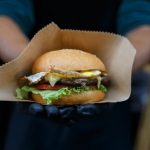What we are putting in our bodies and how we get it is changing about as rapidly as updates about the number of new COVID-19 cases.
Jo-Ann McArthur, president and partner of Nourish Food Marketing, says the market has shifted underfoot in the immediate term to so-called “pantry loading” and more shelf stable kind of products. She has seen a real increase in soups, oats, pulses and proteins like tuna, dries beans and legumes, as well as shelf stable alternative dairy products and powdered milk.
There has also been a bump in frozen foods, as well as a boost in products that have been marketed as immune boosters, like kombucha. Produce, on the other hand, is stagnant, despite being a healthier option, as consumers concern themselves about shelf life.
“[Products] that aren’t shelf-stable or can’t be frozen, are definitely being hurt. Milk has been falling for a while, so it’ll likely to continue,” she says.
In the future, functional food benefit preferences will return, and people will look to it as a first-line defence for health. However, she does say several Nourish clients that had new products to present to retailer head offices have had to delay those launches, and predicts the product innovation pipeline will slow going forward. Food innovation tradeshow SIAL Canada has been postponed and natural products exhibition Expo West has been cancelled.
With people at home, she says we are going to start seeing people baking and cooking at home more over the short term, especially with kids at home for March Break. CPG brands like Campbell’s that built microsites showcasing related recipes were ahead of the curve and stand to benefit.
On the shopping front, in-store sampling and self-serve options like olive bars have been suspended indefinitely, which makes McArthur wonder if it will go back to the way it used to be, or if food safety practices – like health certifications or pre-packaged samples – will be put in place to reassure a jittery public.
After images of long lineups and overcrowded stores were common in the news and social media last week, McArthur says people are now shopping a bit smarter, utilizing their loaded pantries but also going to the store at off-peak times in the name of social distancing. That should help address images of empty shelves as well, as “panic buying” has been cited as a main hurdle in keeping stores stocked.
While Canadians have been slow to adopt online shopping, delivery and click-and-collect at grocery stores, these options have been seeing a short-term bump out of necessity, which could result in a longer-term bump among shoppers that have tried and liked it, especially among older ones that have had the services explained to them by younger, concerned family members. Several Loblaw banners have already reported an increase in delivery orders, and McArthur says Instacart deliveries in March have “gone up hugely.”
source: https://strategyonline.ca/
MARKETING Magazine is not responsible for the content of external sites.










